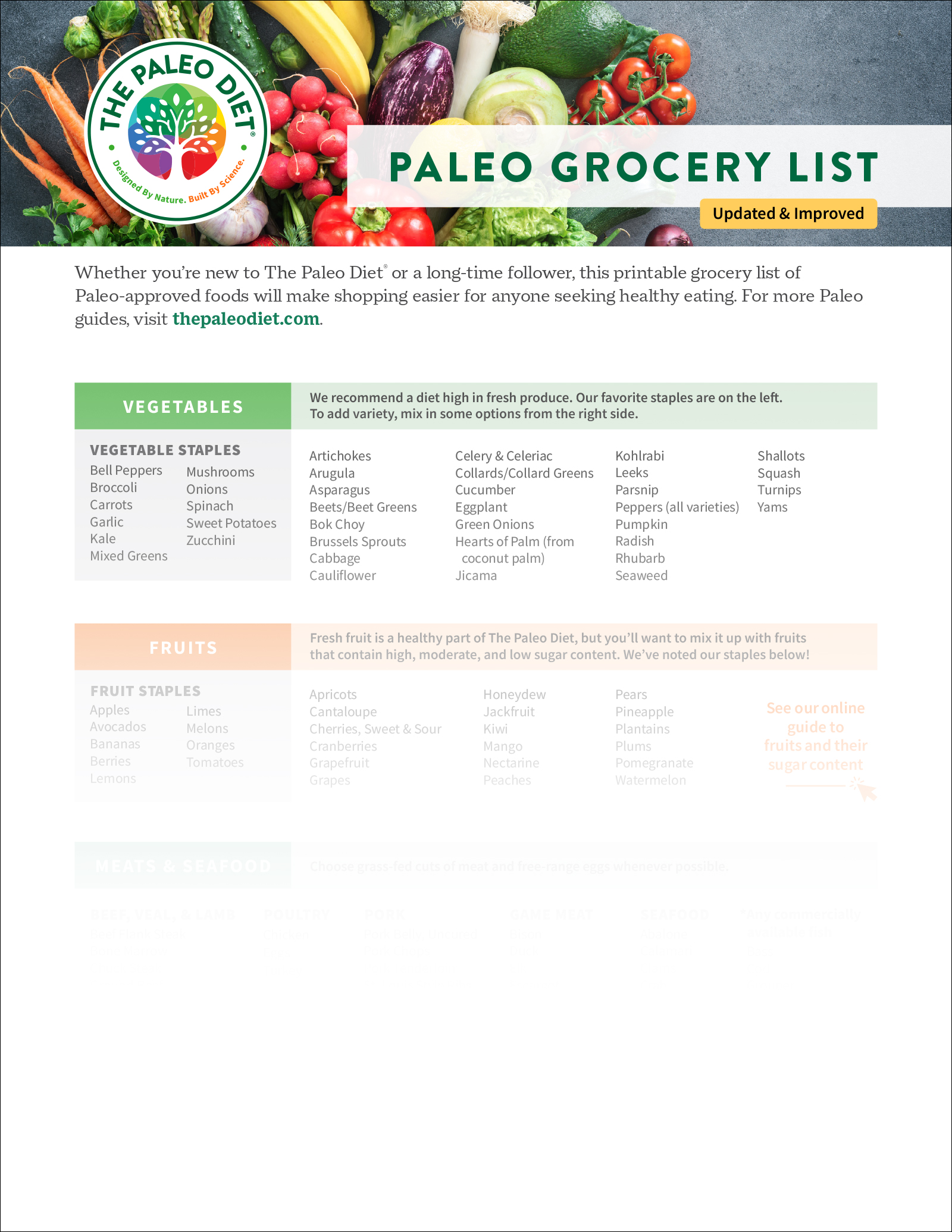Food Built to Last: Bringing Longevity Science into the Food Industry
Griffin McMath, ND and ND

The modern food system is extraordinary at engineering pleasure. A single bite of a familiar snack can spark a cherished memory or create a sense of comfort, even if that comfort is only perceived in the moment. That ability has shaped grocery shelves, built entire categories of consumer-packaged goods (CPG), and influenced the way many of us eat every day.
Meals don’t end in the moment you’re enjoying them, though. Eating patterns repeat across households, and those repetitions accumulate into larger currents that influence agriculture, retail, and health systems. Longevity science can help us trace this progression, connecting the immediate effects of food with the broader patterns they create over time.
And once we recognize this, we can realize a collective opportunity for change. We already know how to build joy in the moment. The task now is to stretch that joy into a longer, more comprehensive arc of well-being. Food built to last satisfies at the bite and continues to support daily life, sustain communities, and regenerate the systems that feed us.
There’s More to Your Favorite Snack Commercial: The Story After the Bite
Most food commercials end on the same frame: a smile, a bite, consumer satisfaction vividly captured in an instant. But have you noticed how pharmaceutical ads flip that script? They show what happens after the intervention. Food could tell that fuller story, too, but the camera usually cuts before the real effects set in.
And those effects matter. Some people describe feeling steady through the afternoon, while others notice fogginess or restlessness before their next work meeting. The difference shows up again at home. It might look like patience for helping with homework or frustration and lack of focus during a shared meal instead.
The meal pictured didn’t end when the ad faded, just like it won’t end for you when you eat that food, too. The impact and story are still unfolding hours later, in ways people can feel and the people around them can, too.
Clinicians hear this reality every day: fatigue, brain fog, irritability, et cetera. Research confirms what patients report: In a controlled NIH trial, participants gained weight on an ultra-processed diet compared with an unprocessed diet, even when calories and macros were identical.1 More recent randomized trials confirm the pattern.2,3
Umbrella reviews extend the picture: frequent ultra-processed food consumption is associated with greater risk of metabolic disease and mental health concerns.4 Studies in both adolescents5 and adults6 show higher odds of depressive symptoms with higher intake of ultra-processed foods.
Integrative practitioners have been hearing these stories for decades—long before journals named the trend. The difference now is that funding priorities and journal space are finally being directed toward documenting these effects.
Industry Shifts Show Change Is Possible
The encouraging part is that this kind of knowledge doesn’t have to stay theoretical. The food industry has already shown it can respond when new information arrives. Sugar has been lowered in many products, protein has been added, labels have been “cleaned” up, and plant-forward options have expanded.
Some of these shifts were evidence based from the start. Others, like the push for low- or zero-fat foods, were revised years later as science provided greater context. And some changes have been pushed further than the science supports, capitalizing on trends or consumer fears more than long-term outcomes. They show adaptation is possible, but too often in fragmented ways and without a larger design that prioritizes endurance.
That’s where longevity science offers a stronger frame. In medicine, recovery requires more than a single intervention; it takes time, context, and follow-up. Food deserves the same approach: coordinated, sustained, and measured by outcomes that last.
For food manufacturers, the design brief itself could change not just flavor and cost on the page, but the question of how someone feels two hours later. Will people report steadiness, clarity, and resilience—or restlessness and depletion? Satiety, post-meal energy, and focus could be measured alongside safety and shelf life, giving a fuller picture of how foods perform.
Research already offers models for how this can work. Dietary strategies that stabilize blood sugar have improved long-term glycemic control and, in some cases, supported remission in type 2 diabetes.7 Satiety studies show how texture and eating pace influence appetite,8,9 while gut–brain research maps how diet shapes emotional resilience.10 These findings give developers tools that can be applied directly in food product design.
Policy, Subsidies, and Shaped Cravings
For decades, policy has written the menu behind the menu. Subsidies poured into corn, soy, and wheat until they became the backbone of nearly every processed aisle in grocery stores. Factories rose to process them, retailers built shelves around them, and marketers taught us to crave them. What was cheap and convenient became normal, and what was normal became defended.
Public health advocates, sustainability leaders, and nutrition educators have been pointing out these distortions for years, often with little political traction. Their persistence laid the groundwork for today’s calls to reorient subsidies toward diverse crops, regenerative practices, and labeling that measures outcomes beyond the bite.11–13
Though always easier suggested than implemented, the opening for policymakers is clear. Begin redirecting incentives to reward durability and diversity, and the market will follow.
Bringing Pharmaceutical Discipline into Food Design
In order to be an FDA-approved drug, pharmaceutical development must track outcomes over time. Lifecycle-first formulation can bring that discipline to food if it is designed not only for joy at the bite, but also for what comes next.
For research and development (R&D) teams, the opportunity is to build design briefs that account for more than taste and cost. Ask how a food product is experienced in the body hours later: does energy feel level, is focus easier to maintain, does mood hold? These outcomes can be tracked and measured as part of food design.
Sports nutritionists, integrative clinicians, and behavioral scientists have long tracked these outcomes—whether in athletes recovering after training or patients learning to stabilize energy through the day. Bringing that rigor of longevity science into food product development can make it a more accessible norm.
Research on eating patterns aligned with circadian rhythms shows how timing and structure can reduce metabolic strain and improve glycemic outcomes.7,8 These findings highlight the potential for lifecycle-first formulation to move from concept to measurable practice. Timing, structure, and context matter, and they can be measured.
Moving Forward Together
The great news is that this shift is already underway. Innovators are experimenting with satiety measures, while retailers and investors are piloting models that reward staying power.
Clinicians—especially naturopathic doctors, integrative physicians, and registered dietitians—have always kept food at the center of care even when conventional practice dismissed it. Their persistence is being echoed in headlines: new medical schools built with nutrition as a foundation,14 and state mandates like Texas requiring nutrition in curricula.15 These are signs of change built on decades of perseverance.
The same is true across the system. Indigenous food leaders and regenerative farmers safeguarded biodiversity when industrial agriculture doubled down on monocultures. Public health advocates kept pressing subsidy reform even when it was politically unpopular. Small CPG innovators tested cleaner formulations long before retailers demanded them. Each carried the work forward until conditions shifted.
How Every Stakeholder Can Advance Food Built to Last
- Product and R&D: Redefine design briefs around post-meal outcomes and use minimally processed, Paleo-aligned ingredients to test satiety and glycemic stability.
- Quality & Certification: Create measurable benchmarks for “energy stability,” “focus support,” and “satiety duration” that consumers can trust.
- Retail & CPG: Curate “food built to last” sets; highlight calm energy and recovery outcomes at the shelf.
- Policy & Public Health: Redirect subsidies toward crop diversity and soil recovery; expand transparent labeling tied to validated outcomes.
- Clinicians: Encourage patients to observe how meals affect their energy, focus, and mood in the hours that follow, and track those patterns over time.
- Consumers: Pick meals that leave you steady. Share what works with your family or peers. Ask brands to prove how their products perform after the bite. Each action signals what matters, and those signals add up.
Food Built to Last
Food built to last sparks joy in the moment and carries it into the hours that follow. It strengthens trust in the brands that make it and nourishes the systems that grow it. There has never been a better or more critical time for our collective action. Longevity science is maturing, the tools for testing are here, and consumer demand for steadier days has never been this high.
So, let’s write the next design brief together, for a food system that’s measured by how well it helps us all live, recover, and endure.
This article is for educational purposes and is not medical advice. If you have a medical condition or take medications, consult your clinician before making dietary changes.
References
- Hall, K. D. (2019). Ultra-Processed Diets Cause Excess Calorie Intake and Weight Gain: An Inpatient Randomized Controlled Trial of Ad Libitum Food Intake. Cell Metabolism, 30(1). https://doi.org/10.1016/j.cmet.2019.05.008
- Hamano, S., Sawada, M., Aihara, M., Sakurai, Y., Sekine, R., Satoshi Usami, Kubota, N., & Yamauchi, T. (2024). Ultra‐processed foods cause weight gain and increased energy intake associated with reduced chewing frequency: A randomized, open‐label, crossover study. Diabetes Obesity and Metabolism, 26(11). https://doi.org/10.1111/dom.15922
- Dicken, S. J., Jassil, F. C., Brown, A., Kalis, M., Stanley, C., Ranson, C., Ruwona, T., Qamar, S., Buck, C., Mallik, R., Hamid, N., Bird, J. M., Brown, A., Norton, B., Gandini Wheeler-Kingshott, C. A. M., Hamer, M., van Tulleken, C., Hall, K. D., Fisher, A., & Makaronidis, J. (2025). Ultraprocessed or minimally processed diets following healthy dietary guidelines on weight and cardiometabolic health: a randomized, crossover trial. Nature Medicine. https://www.nature.com/articles/s41591-025-03842-0
- Lane, M. M., Gamage, E., Du, S., Ashtree, D. N., McGuinness, A. J., Gauci, S., Baker, P., Lawrence, M., Rebholz, C. M., Srour, B., Touvier, M., Jacka, F. N., O’Neil, A., Segasby, T., & Marx, W. (2024). Ultra-processed food exposure and adverse health outcomes: umbrella review of epidemiological meta-analyses. BMJ, 384(8419), e077310. https://www.bmj.com/content/384/bmj-2023-077310
- Zheng, W., Xiong, J., Huang, B., & Kong, Q. (2025). Associations between ultra-processed food consumption and duration of exercise with psychological symptoms in Chinese adolescents: a nationwide cross-sectional survey. Frontiers in Nutrition, 12. https://doi.org/10.3389/fnut.2025.1591909
- Calcaterra, V., Cena, H., Loperfido, F., Porri, D., Basilico, S., Gazzola, C., Rizzo, C. R., Conti, M. V., Luppino, G., Malgorzata Gabriela Wasniewska, & Gianvincenzo Zuccotti. (2024). Functional Gastrointestinal Disorders and Childhood Obesity: The Role of Diet and Its Impact on Microbiota. Nutrients, 17(1), 123–123. https://doi.org/10.3390/nu17010123
- Bruno, J., Walker, J. M., Nasserifar, S., Upadhay, D., Ronning, A., Vanegas, S. M., Popp, C. J., Barua, S., & Alemán, J. O. (2024). Weight neutral early time-restricted eating improves glycemic variation and time-in-range without changes in inflammatory markers. IScience, 111501. https://doi.org/10.1016/j.isci.2024.111501
- Liu, H. Y., Eso, A. A., Cook, N., O’Neill, H. M., & Albarqouni, L. (2024). Meal Timing and Anthropometric and Metabolic Outcomes. JAMA Network Open, 7(11), e2442163. https://jamanetwork.com/journals/jamanetworkopen/fullarticle/2825747
- Heuven, L. A. J., Marieke van Bruinessen, Tang, C. S., Stieger, M., Lasschuijt, M. P., & Forde, C. G. (2024). Consistent effect of eating rate on food and energy intake across twenty-four ad libitum meals. British Journal of Nutrition, 132(4), 535–546. https://doi.org/10.1017/s0007114524001478
- Zuo, B., Yang, F., Huang, L., Han, J., Li, T., Ma, Z., Cao, L., Li, Y., Bai, X., Jiang, M., He, Y., & Xia, L. (2024). Endothelial Slc35a1 deficiency causes loss of LSEC identity and exacerbates neonatal lipid deposition in the liver in mice. CMGH. https://doi.org/10.1016/j.jcmgh.2024.03.002
- Willett, W., Rockström, J., Loken, B., Springmann, M., Lang, T., Vermeulen, S., Garnett, T., Tilman, D., DeClerck, F., Wood, A., Jonell, M., Clark, M., Gordon, L. J., Fanzo, J., Hawkes, C., Zurayk, R., Rivera, J. A., De Vries, W., Majele Sibanda, L., & Afshin, A. (2019). Food in the Anthropocene: the EAT–Lancet Commission on Healthy Diets from Sustainable Food Systems. The Lancet, 393(10170), 447–492. https://doi.org/10.1016/S0140-6736(18)31788-4
- Farm & Commodity Policy – Title I: Crop Commodity Program Provisions | Economic Research Service. (2025). Usda.gov. https://www.ers.usda.gov/topics/farm-economy/farm-commodity-policy/title-i-crop-commodity-program-provisions
- USA Facts. (2019, June 4). Federal farm subsidies: What the data says. USAFacts. https://usafacts.org/articles/federal-farm-subsidies-what-data-says/
- Park, A. (2025, July 21). The World’s Richest Woman Has Opened a Medical School. TIME; Time. https://time.com/7303692/alice-walton-school-of-medicine-new-medical-school/
- 89(R) S.B. 25, no. S.B. No. 25 (2025). https://capitol.texas.gov/tlodocs/89R/billtext/pdf/SB00025F.pdf




